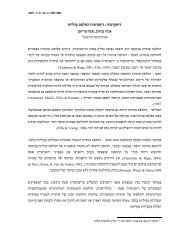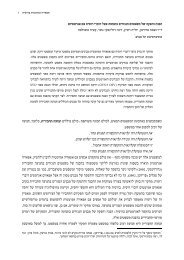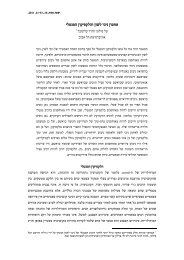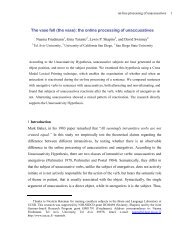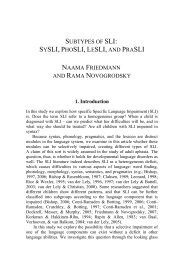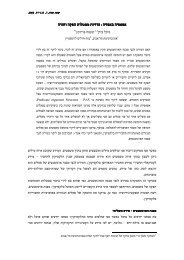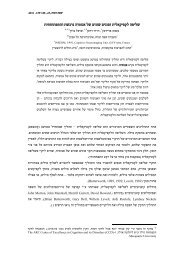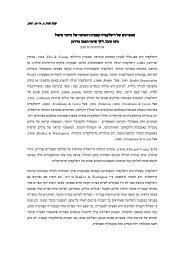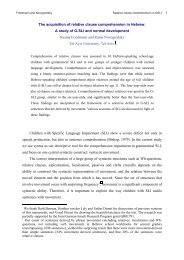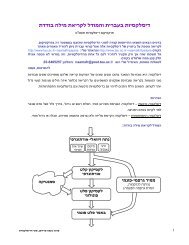Developmental surface dyslexias - Naama Friedmann
Developmental surface dyslexias - Naama Friedmann
Developmental surface dyslexias - Naama Friedmann
You also want an ePaper? Increase the reach of your titles
YUMPU automatically turns print PDFs into web optimized ePapers that Google loves.
cortex 44 (2008) 1146–1160 1153<br />
comprehension, which will be presented in the next sections.<br />
The bottom rows of Table 4 include the threshold for each<br />
task above which the number of errors of a dyslexic participant<br />
is significantly larger (Crawford and Howell’s (1998)<br />
t-test, p < .05) than the age-matched control group. (For example,<br />
the adults control group had an average of 1.0% errors<br />
in reading aloud irregular/potentiophonic words, with SD of<br />
0.9%. For these data, given 16 participants in this control<br />
group, the lowest score that would be significantly different<br />
from the control would be 2.7% errors, using Crawford and<br />
Howell’s (1998) t-test, and this is presented in Table 2.)<br />
2.3.2. Lexical decision<br />
The participants differed with respect to their ability to decide<br />
which of two letter strings was a word spelled correctly, as<br />
seen in Table 4. Whereas nine of the participants performed<br />
within the normal range in this task ( p > .05 for the comparison<br />
of each of them with their controls), eight performed significantly<br />
poorer than their controls (t > 6, p < .001).<br />
2.3.3. Homophone and potentiophone comprehension<br />
The assessment of homophone/potentiophone comprehension<br />
showed that some of the participants performed well in<br />
this task, indicating preserved access to semantics, whereas<br />
others did poorly. As seen in Table 4, six of the participants<br />
performed within normal limits in the homophone selection<br />
task, whereas the other participants performed significantly<br />
poorer than their control groups ( p < .05), five of them<br />
performing at chance level on this task. Thus, the results<br />
yielded 3 patterns: impaired reading aloud, lexical decision,<br />
and comprehension; impaired reading aloud and comprehension,<br />
with intact lexical decision; and impaired reading<br />
aloud with intact lexical decision and comprehension.<br />
2.3.4. Naming<br />
The results of the naming task are reported in Table 5. The<br />
naming performance of 16 of the 17 participants was within<br />
the normal range, with performance ranging between 92 and<br />
100 items named correctly out of 100 items, indicating intact<br />
lexical access and retrieval. Especially relevant for <strong>surface</strong><br />
dyslexia, in which some individuals showed impaired phonological<br />
output lexicon, the naming ability of the participants in<br />
this study indicates that they had no impairment at the phonological<br />
output lexicon. None of the participants produced<br />
a phonemic paraphasia, indicating also an intact phonemic<br />
output buffer for all the participants.<br />
One participant, AS, performed below the normal range,<br />
with 88% correct naming, which might indicate a deficit in<br />
lexical retrieval as well. Unlike previously reported individuals<br />
with acquired <strong>surface</strong> dyslexia, the pattern of his errors<br />
and other responses in the naming task did not indicate<br />
a deficit in the phonological output lexicon, which is usually<br />
manifested in phonologically related paraphasias. His errors<br />
were close semantic paraphasias, hesitations, and don’t know<br />
responses, and only one of his paraphasias was a formal<br />
paraphasia, which was not only phonologically, but also semantically,<br />
related to the target word. AS’s response pattern<br />
is not characteristic of a deficit in the phonological lexicon<br />
itself, because a deficit at this level is expected to also yield<br />
phonemic paraphasias. According to his error pattern, AS’s<br />
mild lexical retrieval difficulties stem from a deficit either<br />
in the semantic lexicon, or in the access from the semantic<br />
lexicon to the phonological output lexicon – according to<br />
Butterworth (1989) and Caramazza and Hillis (1990), when<br />
there is no access to the phonological representation of<br />
the target word, a word which is semantically related to it,<br />
whose phonological representation is available, might be<br />
produced instead. The fact that he had frequency effect on<br />
naming (r pb ¼ .2, p ¼ .03) further supports a deficit in the access<br />
to the phonological output lexicon rather than a deficit<br />
in the semantic lexicon (Jescheniak and Levelt, 1994). It<br />
might be interesting to note that AS’s reading indicated<br />
that he also had a deficit in the access from the orthographic<br />
input lexicon to the phonological output lexicon, so his deficit<br />
might be a general difficulty accessing the phonological<br />
output lexicon. (This is unlike the other eight individuals<br />
Table 5 – Performance on naming 100 objects<br />
Participant Correct responses Don’t know Paraphasia Correct naming following<br />
Semantic Formal a Long hesitation Semantic paraphasia<br />
SH 93 1 1 3 2<br />
GL 96 1 1 1 1<br />
OF 95 3 2<br />
YR 92 4 1 3<br />
OM 96 4<br />
BZ 100<br />
AS 88 2 5 1 3 1<br />
OS 96 2 2<br />
AK 95 1 2 2 0<br />
AM 97 3<br />
AL b 96 1 1 1 1<br />
KR 92 5 2 1<br />
NF 99 1<br />
IR 100<br />
YD 96 4<br />
a All the formal paraphasias produced by our participants were phonologically and semantically related to the target.<br />
b AL’s don’t know response and his correct response following hesitation also included a definition of the target.




